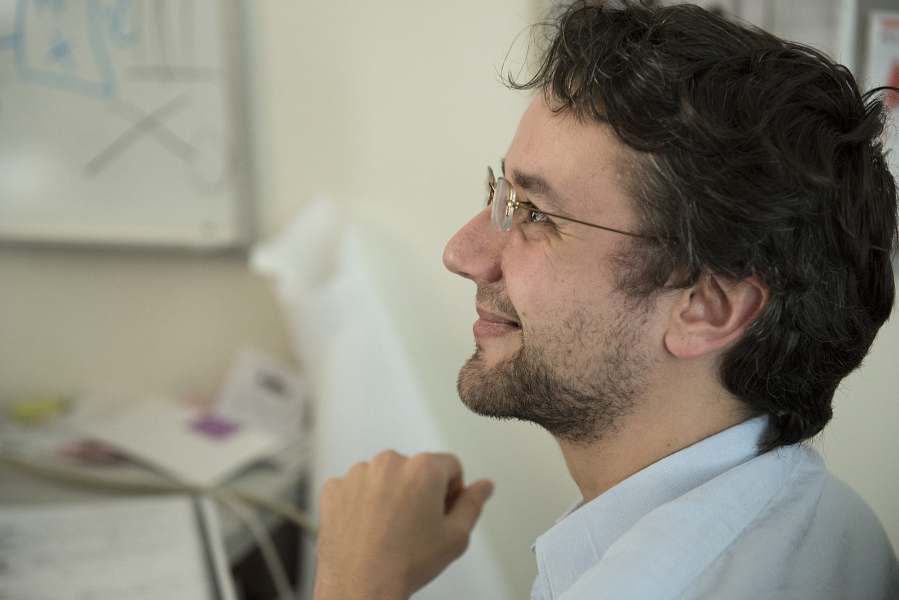With half the world’s population — more than 3.5 billion people, according to an United Nations estimate — living less than 40 miles away from coastlines, scientists want to know how effectively coastal plants buffer inland areas from rising seas and extreme weather events. But doing the research was an arduous and limited task until three Washington State University Vancouver scientists got involved.
WSUV environmental scientist Stephen Henderson worked with Nikolay Strigul, assistant professor of mathematics and statistics, and Jean Liénard, a mathematics postdoctoral researcher, to develop a computer model that uses photographs to re-create the complex geometry of the plants to be used in a workable computer model.
“The traditional method is you go out there with rulers and calipers, 16th-century technology really, and it takes forever to measure anything useful, which makes it really hard to test any of our theories about water flow,” Henderson said.
Hendersen and other scientists were specifically interested in how mangrove forests in the Mekong River Delta of Vietnam buffer water flows and if they protect against coastal erosion. Rather than measuring test areas in the traditional way, which would require hundreds of workers and countless hours for even small areas, the researchers isolated groups of plants and photographed them hundreds of times from various angles.
“It takes 15 minutes to take 300 photos. Compare that to measuring by hand, and it’s not even close,” Henderson said, adding the technique likely saved thousands of hours.
Strigul and Liénard then used a computer model they developed to create three-dimensional representations of terrestrial forests and altered it to work with the mangroves.
“This is part of our (earlier) project where … we took pictures of trees with drones, but from a technical perspective, this was an adaptation,” Strigul said. “It certainly had its own challenges.”
The computer calculated the angle and distance of where each photo was shot and created a digital re-creation of the plants down to a few millimeters of accuracy.
“Without this technique, there’s no way to know the geometry (of the plants) because there’s no way to measure it by hand,” Liénard said. But using the computer model, “ it’s a good demonstration of progress. We can apply it and discover new things we could not see before.”
Other scientists then applied water flow data taken from the Mekong River and combined it with the 3-D mangrove stand the WSUV researchers created.
The project was a collaboration with Dr. Demetrios Gatziolis from the U.S. Forest Service, the Pacific Northwest Research Station, and scientists from the University of Waikato in New Zealand, Vietnam National University and the University of Washington.
It was funded largely by the Office of Naval Research and the National Science Foundation.
The breakthrough technique can now be applied to other projects seeking to understand how coastal plants might trap sediment and reduce flooding from climate change-related rising seas and extreme weather. That information that will likely be important to coastal populations.
Stevenson said he thinks the technique can be applied to understanding how debris alters the salmon habitat in rivers of the Pacific Northwest in the future.
“Though we’re a few years off from that,” he said.




